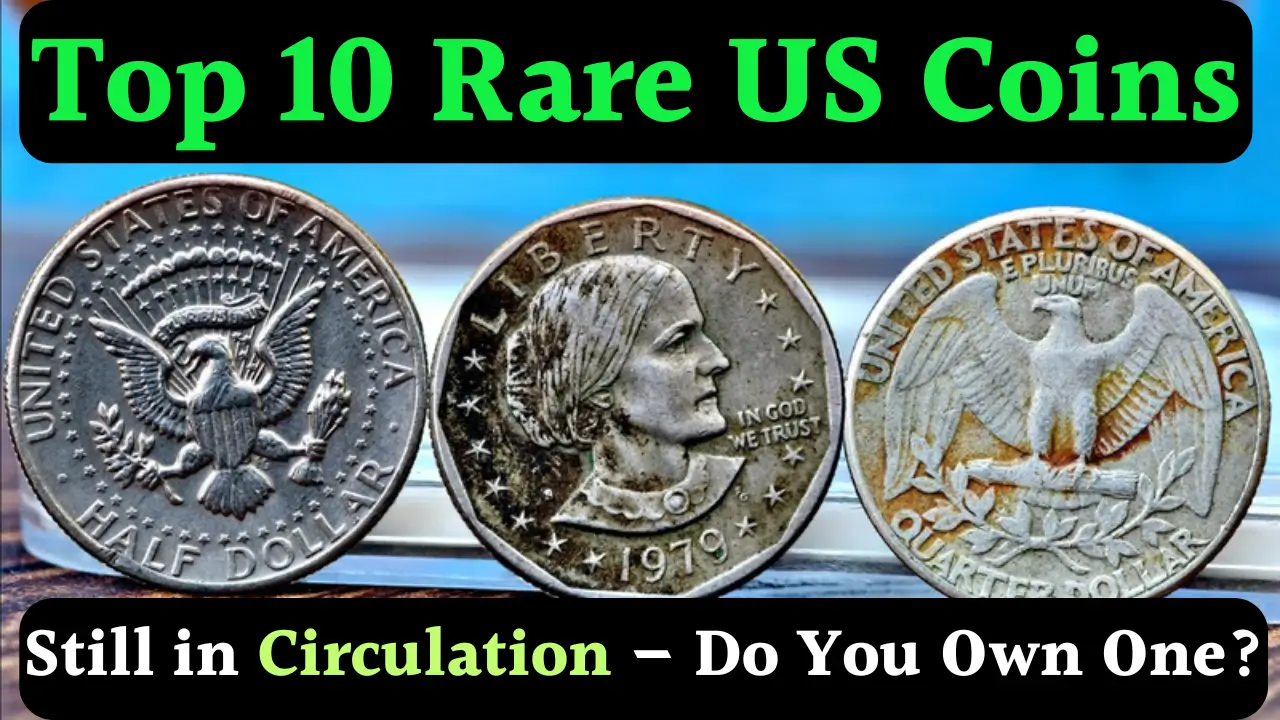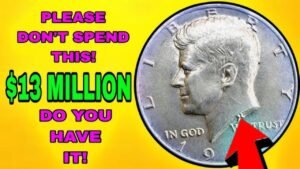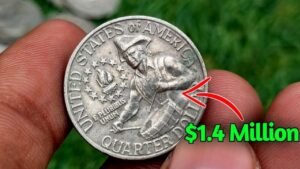The world of coin collecting has fascinated historians, investors, and everyday Americans for generations. While many rare coins are locked away in collections or museums, some still slip into regular circulation. Surprisingly, a penny, dime, or quarter in your pocket could be worth far more than its face value.
If you’ve ever wondered whether your change might hold hidden treasures, this guide reveals the top 10 rare US coins still in circulation — and why they can be worth hundreds, or even thousands, of dollars.
Why Do Rare Coins Still Appear in Change?
Rare coins resurface in circulation for a few key reasons:
- Millions were originally minted, and some survive decades later.
- Families may unknowingly spend inherited coin collections.
- Many people are unaware of a coin’s true value.
This means valuable coins could be hiding in wallets, jars, or cash registers, waiting to be discovered.
Top 10 Rare US Coins Still in Circulation
1. 1943 Steel Penny
- Produced during World War II when copper was reserved for ammunition.
- Most are steel, but a few copper versions were struck by mistake.
- These rare copper errors can fetch over $50,000.
2. 1955 Doubled Die Penny
- Famous error coin with noticeable doubling on “LIBERTY” and “IN GOD WE TRUST.”
- Can sell for $1,000–$15,000 depending on condition.
3. 1969-S Doubled Die Obverse Penny
- Strong doubling visible on the date and inscriptions.
- Extremely scarce, worth $10,000+ in mint condition.
4. 1972 Doubled Die Obverse Penny
- Another dramatic doubled die error.
- Valued between $100–$500+, with some rare varieties going higher.
5. 1992 Close AM Penny
- On rare versions, the letters “A” and “M” in AMERICA nearly touch.
- Collectors pay $500–$3,000 for this variety.
6. 2004 Wisconsin Extra Leaf Quarter
- Part of the state quarter series.
- Features an extra “leaf” on the corn stalk, in “High” or “Low” versions.
- Worth $100–$1,500.
7. 1932–1964 Washington Silver Quarters
- Minted with 90% silver content.
- Their melt value alone is worth more than face value, typically $5–$10+.
8. Jefferson Wartime Nickels (1942–1945)
- Made with 35% silver due to wartime nickel shortages.
- Identified by a large mintmark above Monticello.
- Valued at $1–$10.
9. 1970-S Small Date Penny
- Two versions exist: small date and large date.
- The small date is collectible and worth $50–$700.
10. 1982 No Mint Mark Roosevelt Dime
- Most dimes have a mint mark, but this variety does not.
- Values range from $50–$300.
Table: Rare US Coins Still in Circulation
| Coin | Year | Key Feature | Value Range | Circulation Probability |
|---|---|---|---|---|
| Steel Penny | 1943 | Copper error versions | $50,000+ | Extremely rare |
| Doubled Die Penny | 1955 | Doubling on inscriptions | $1,000–$15,000 | Low |
| Doubled Die Obverse Penny | 1969-S | Doubling on obverse | $10,000+ | Extremely rare |
| Doubled Die Obverse Penny | 1972 | Visible doubling | $100–$500+ | Moderate |
| Close AM Penny | 1992 | AM letters close together | $500–$3,000 | Rare |
| Wisconsin Extra Leaf Quarter | 2004 | Extra corn leaf | $100–$1,500 | Rare |
| Washington Silver Quarters | 1932–1964 | 90% silver | $5–$10+ | Moderate |
| Wartime Nickels | 1942–1945 | 35% silver | $1–$10 | Moderate |
| Small Date Penny | 1970-S | Narrow date design | $50–$700 | Rare |
| No Mint Mark Dime | 1982 | Missing mint mark | $50–$300 | Low |
How to Identify Rare Coins
Spotting rare coins doesn’t always require expertise. Look out for:
- Doubling on numbers or letters.
- Missing or unusual mint marks.
- Uncommon designs or spacing (like the Close AM penny).
- Older silver coins minted before 1965.
A magnifying glass or coin-checking app can help confirm details.
Why Rare Coins Are Valuable
Three main factors drive coin value:
- Rarity – The fewer available, the higher the value.
- Demand – Collectors raise prices for significant designs or errors.
- Condition – Higher-grade (uncirculated) coins are worth the most.
Silver coins also carry intrinsic metal value, adding to their market worth.
Everyday Tips for Finding Rare Coins
- Always check dates carefully.
- Hold coins at an angle to spot doubling.
- Watch for minting errors.
- Inspect quarters and nickels from the 1940s–1960s for silver content.
- Set aside anything unusual for further checking.
The Future of Rare Coin Circulation
As digital payments grow, fewer coins are being used daily. This makes the chance of finding a rare coin even more exciting — and valuable. Over time, spotting such treasures in circulation will become rarer, making them more desirable to collectors.
FAQs About Rare US Coins
1. Can I still find rare coins in circulation today?
Yes, though rare, valuable coins do appear in everyday change when old collections are spent or rolls are opened.
2. What should I do if I find a rare coin?
Store it safely and consider professional grading to confirm authenticity and value.
3. Are all pre-1965 coins valuable?
Not all are rare, but many contain silver, making them worth more than face value.
4. How do I know if my coin is an error coin?
Compare with standard versions, check for doubling or missing mint marks, or consult a coin guide.
5. Which is worth more — silver coins or error coins?
It depends. Some error coins fetch higher premiums, but silver coins hold lasting value due to their metal content.
Conclusion
Rare US coins are more than spare change — they are pieces of history and hidden wealth. From the legendary 1943 copper penny to the quirky 2004 Wisconsin extra leaf quarter, these coins prove treasures can still be found in everyday life. The next time you get change, take a closer look. That small coin could be worth far more than you think.




